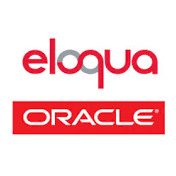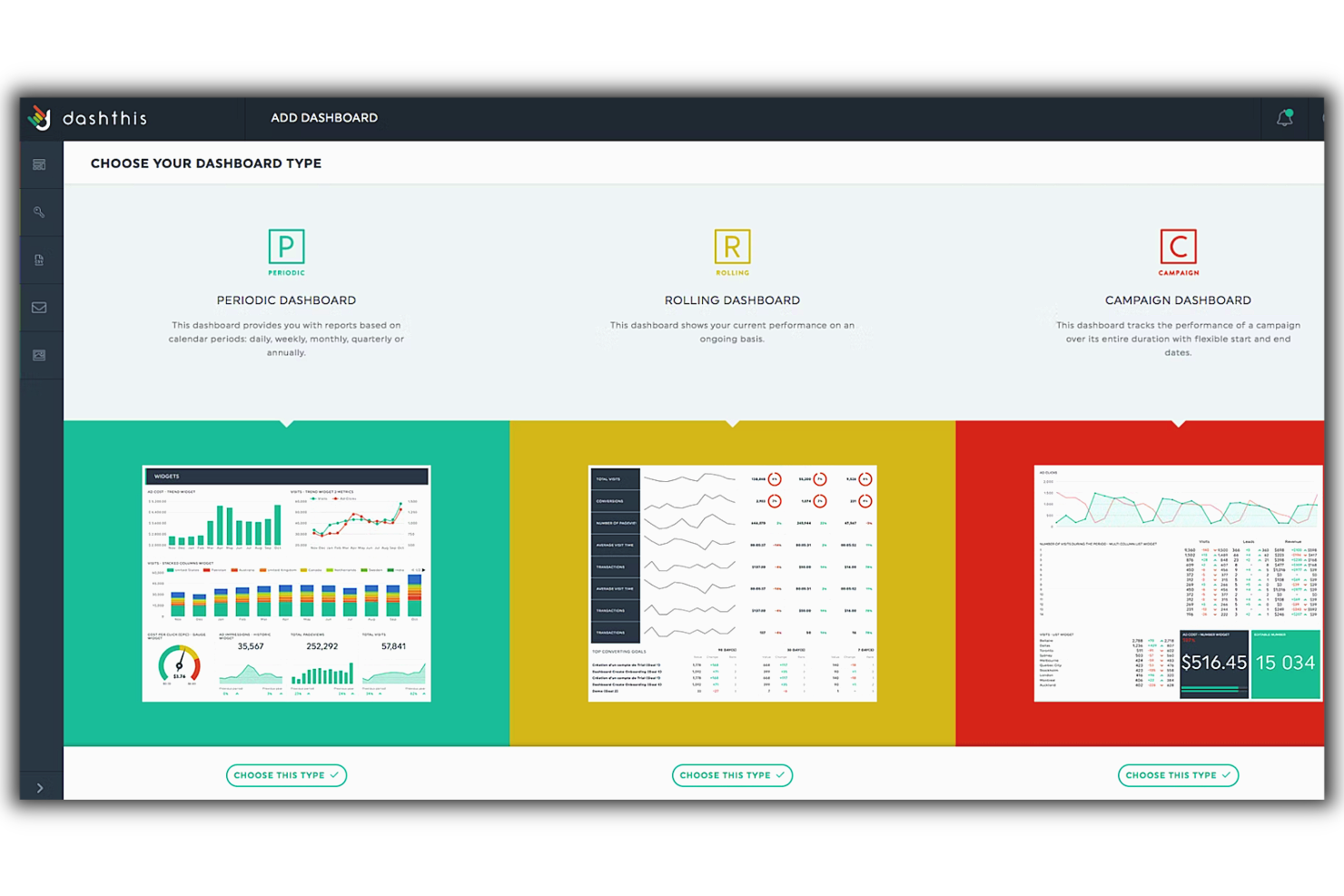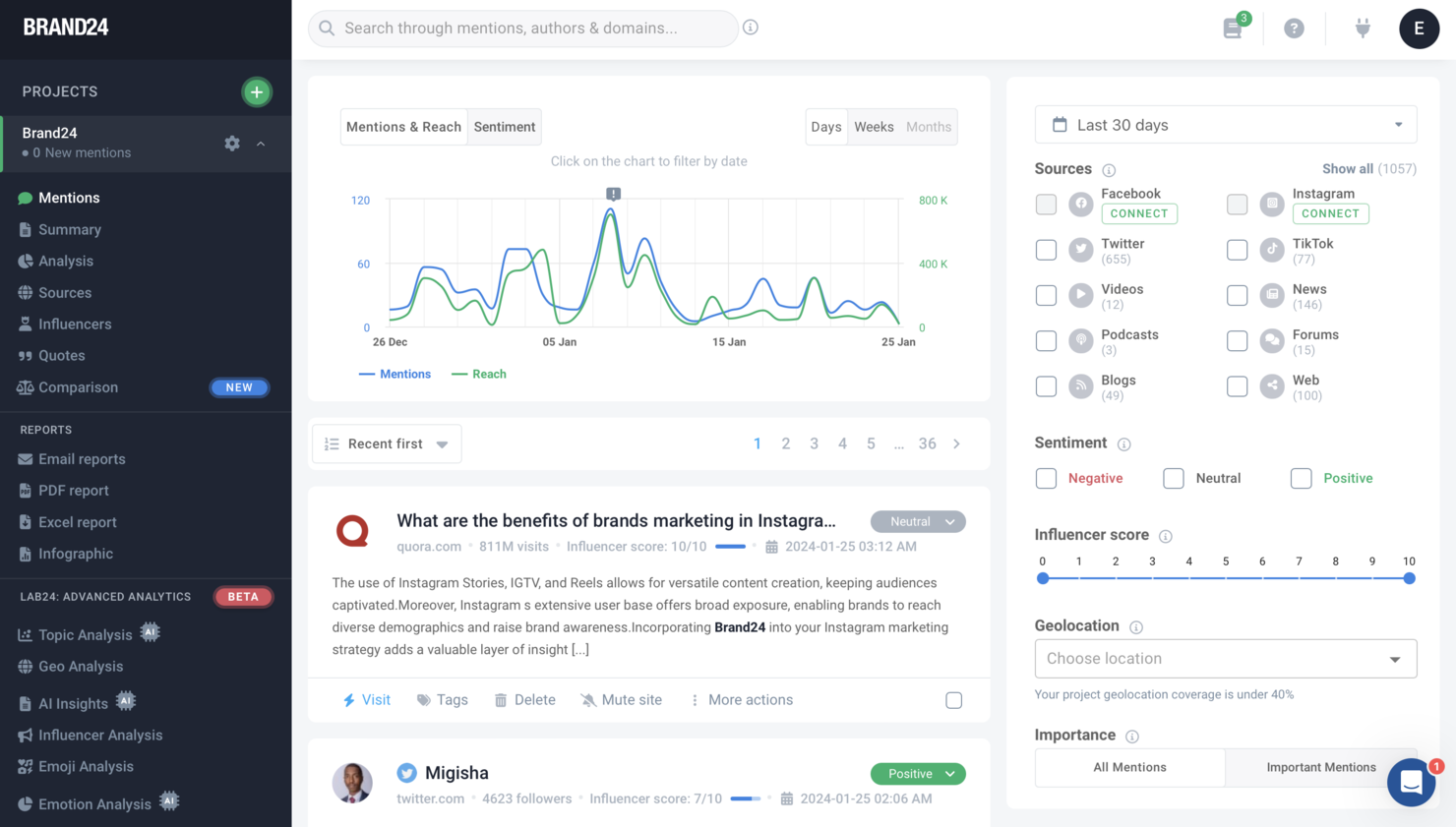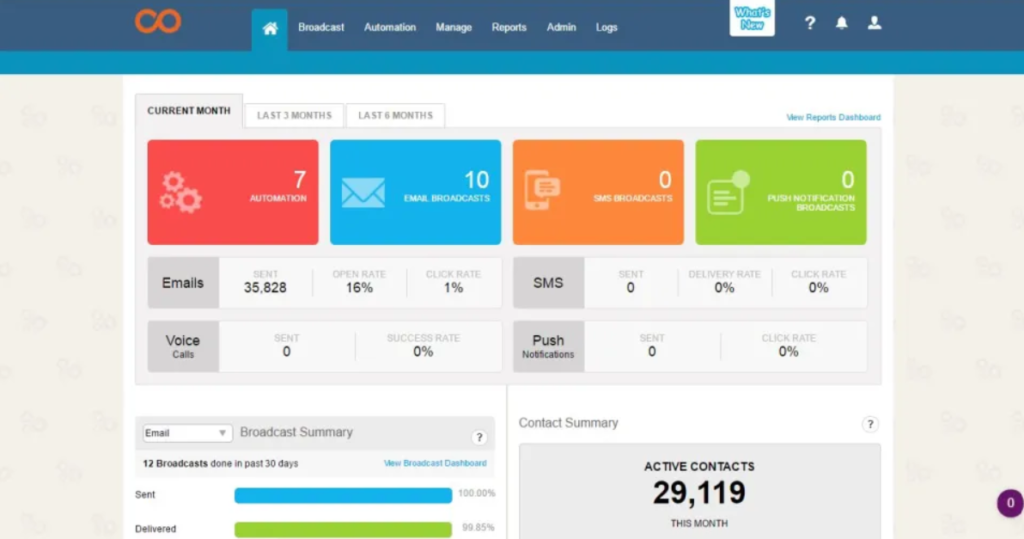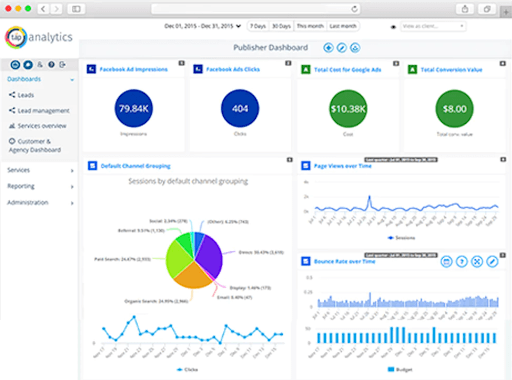10 Best Marketing Analytics Software Shortlist
Here’s my top 10 marketing analytics software out of the 21 along with what I found each does best:
Our one-on-one guidance will help you find the perfect fit.
Marketing analytics software is key to maximizing the ROI of your marketing programs and making informed investment decisions. If you’re evaluating new tools, whether through an RFP or as part of a stack refresh, it’s worth knowing which platforms truly deliver the insights your team needs.
I’ve spent years working with a range of marketing analytics platforms and have a clear sense of what drives value versus what’s just noise. In this guide, I’ve combined that experience with our in-house review methodology to share the tools that help teams track performance, surface insights, and drive smarter marketing outcomes.
Why Trust Our Reviews
We’ve been testing and reviewing marketing software since 2022. As marketing experts ourselves, we know how critical and difficult it is to make the right decision when selecting software.
We invest in deep research to help our audience make better software purchasing decisions. We’ve tested more than 2,000 tools for different marketing use cases and written over 1,000 comprehensive software reviews. Learn how we stay transparent & our software review methodology.
The 10 Best Marketing Analytics Software Summary
| Tool | Best For | Trial Info | Price | ||
|---|---|---|---|---|---|
| 1 | Best for large-scale data | Free demo available | Pricing upon request | Website | |
| 2 | Best for automated reporting | 15-day free trial | From $42/month (billed annually) | Website | |
| 3 | Best for partnership analytics | Free demo available | Pricing upon request | Website | |
| 4 | Best for social media, influencer, and competitor analysis | Free plan available | From $6.75/month (billed annually) | Website | |
| 5 | Best for AI-driven social media insights | 14-day free trial | From $149/user/month (billed annually) | Website | |
| 6 | Best for mobile marketing analytics | Free trial available | Pricing upon request | Website | |
| 7 | Best for ease of use | 7-day free trial | From $249/month (up to 5 users, billed annually) | Website | |
| 8 | Best for website analytics | 30-day free trial | From $5,000/month | Website | |
| 9 | Best for AI-powered personalization | Not available | Website | ||
| 10 | Best marketing analytics for ecommerce | 14-day free trial | From $25/user/month | Website |
-

Eloqua
Visit WebsiteThis is an aggregated rating for this tool including ratings from Crozdesk users and ratings from other sites.4.3 -

Optimizely
Visit WebsiteThis is an aggregated rating for this tool including ratings from Crozdesk users and ratings from other sites.4.2 -

Uberflip
Visit WebsiteThis is an aggregated rating for this tool including ratings from Crozdesk users and ratings from other sites.4.3
Best Marketing Analytics Software Reviews
These are my top 10 picks for marketing analytics software with detailed reviews for each. I listed my additional selection at the bottom of the article, so keep reading if you don’t find what you need here.
Adverity is a fully integrated data platform designed to help businesses automate the connectivity, transformation, and governance of their data at scale. It enables you to collect data from various sources, transform it to meet your needs, and easily compare, analyze, and present marketing data from as many different data sources as you like.
Why I Picked Adverity: I like its advanced data transformation capabilities that can handle large-scale data. You can easily clean, standardize, and harmonize data from multiple sources without writing a single line of code. This includes features like smart naming conventions, currency conversion, and language translation, which ensure your data is accurate and consistent across all platforms.
Another thing that stands out is Adverity's AI-powered data governance. The platform offers automated data quality checks and monitoring, ensuring that the data you work with is trustworthy and up-to-date. This proactive approach to data governance helps in identifying and rectifying issues before they impact your analysis, leading to more reliable and actionable insights.
Adverity Standout Features & Integrations
Features include a comprehensive data connector library, allowing you to integrate data from over 600 different sources, which means you can automate the fetching and integration of all the data you need, with all the metrics and dimensions you require. The platform also offers custom enrichments, enabling your data teams to create tailored transformations to meet specific business needs.
Integrations include over 600 different data sources, like Google Ads, Facebook Ads, Amazon Advertising, Shopify, Salesforce, Adobe Experience Platform, LinkedIn, Microsoft, SAP, Snowflake, and Tableau.
Pros and cons
Pros:
- Automates data integration from multiple sources
- Provides advanced data transformation features
- Offers AI-powered data quality monitoring
Cons:
- Some advanced features might require extra training to utilize fully
- Integration with certain niche data sources may require additional configuration
New Product Updates from Adverity
Adverity's New Data Connectors for Enhanced Integration
Adverity's update introduces five new data connectors, including Oracle Eloqua and Salesforce Commerce Cloud, enhancing data integration capabilities. For more details, visit Adverity Updates.
DashThis is a marketing analytics software that helps businesses track, measure, and visualize their marketing data. It allows users to create custom dashboards and reports and share them with team members or clients.
Why I Picked DashThis: DashThis offers a comprehensive data tracking feature that allows you to track all your KPIs in one place effortlessly. Once the data sources have been selected, you can choose which metrics you want to include in your report. DashThis offers templates for widespread reports, making it easy to get started. The native integrations feature allows users to set up automated report generation, letting them set up their reports on a schedule and be emailed to them automatically. The reports can be customized to include a variety of visualizations, including charts, graphs, and maps. This makes it easy to communicate complex data sets in an understandable and visually appealing way.
The dashboard cloning feature lets you quickly create identical or slightly modified versions of your existing dashboards. This can be useful when creating new dashboards for different periods or experimenting with different data sets. The software also includes features to help users collaborate on data analysis and real-time data visualizations, which allow users to identify trends and patterns. It includes a drag-and-drop interface for easy report creation and a library of multiple integrations.
DashThis Standout Features & Integrations
Features worth mentioning include its intuitive drag-and-drop dashboard builder allows marketers to effortlessly create customized marketing dashboards without coding. The platform's client white-labeling and collaboration capabilities enable branding and seamless teamwork, making it ideal for agencies. DashThis also stands out with its extensive integration ecosystem, supporting popular marketing platforms, consolidating data, and providing marketers with a comprehensive view of their analytics.
Integrations include 34+ connected tools, like TikTok Ads, Shopify, SEMrush, Mailchimp, CallRail, Keymetric, and Perfect Audience.
Pros and cons
Pros:
- Intuitive user interface
- Extensive integration options
- White-Labeling available
Cons:
- Lean predictive modeling capabilities
- Limited customization (without coding)
New Product Updates from DashThis
AI Insights Beta Unveiled by DashThis for Marketers
DashThis introduces AI Insights Beta, allowing marketers to receive narrative analysis directly from dashboards. Limited Beta access is available to refine the feature through feedback. More details at DashThis Product Updates.
impact.com is a partnership management platform that helps businesses oversee various collaborations, including affiliates, influencers, and B2B partnerships.
Why I Picked impact.com: The platform provides omnichannel tracking across digital and offline media, giving you a complete view of customer interactions throughout their journey. This detailed tracking helps you understand which partnership marketing efforts are most effective, allowing for informed decision-making to improve return on investment (ROI).
Another valuable feature is impact.com's real-time data access. With up-to-the-minute insights, you can quickly identify trends and respond to changes in your marketing performance. The platform's custom report builder lets you create and share reports tailored to your specific needs, ensuring that your team stays informed and can act promptly to optimize campaigns.
impact.com Standout Features & Integrations
Features include cross-device tracking, which allows you to see your customer's complete journey across multiple devices. The platform also offers machine-learning algorithmic models and rules-based attribution models to identify the true value of each media channel, helping you allocate your marketing budget more effectively. Additionally, proactive fraud detection is in place to identify and prevent wasted ad spend.
Integrations include Shopify, BigCommerce, HubSpot, Adobe Commerce (Magento), AppsFlyer, Adjust, AnyTrack, Branch, mParticle, Segments, Google Analytics, and Salesforce.
Pros and cons
Pros:
- Comprehensive reporting features
- Supports the entire partnership lifecycle
- Fraud detection capabilities
Cons:
- May take time to set up the platform
- Occasional delays in payment processing
Best for social media, influencer, and competitor analysis
Social Status is a comprehensive social media analytics and reporting tool designed for agencies and brands. It offers automated reporting for social media performance across various platforms such as Facebook, Instagram, TikTok, LinkedIn, and YouTube.
Why I Picked Social Status: I like that the platform's robust feature set is designed to simplify social media performance tracking. Social Status offers automated reporting that consolidates data from multiple platforms such as Facebook, Instagram, TikTok, LinkedIn, and YouTube into a single dashboard, saving time and ensuring better visibility. Additionally, the ability to generate customizable, boardroom-ready reports in various formats provides flexibility and professionalism, allowing marketers to present data effectively to stakeholders.
Social Status takes social media management a step further with competitor and influencer analytics capabilities. Its competitor analytics allow users to benchmark their performance against rivals, gaining insights into industry trends and strategic opportunities. The influencer analytics feature consolidates metrics from influencer campaigns, providing a clear view of their impact and ROI. This level of detail in tracking and reporting ensures that marketing strategies can be fine-tuned for maximum effectiveness.
Social Status Standout Features & Integrations
Features include a centralized dashboard, customizable reporting templates, paid and organic breakdowns, and segmentation and filtering options. The influencer marketing capabilities also feature a read-only connection for each creator, allowing you to share performance data more seamlessly.
Integrations include Facebook Pages, Instagram Professional Profiles, Instagram Stories and Reels, Meta Business Suite, Meta Ads Manager, TikTok Profiles, LinkedIn Company Pages, X (Twitter) Profiles, YouTube Channels, and YouTube Shorts.
Pros and cons
Pros:
- Competitor and influencer analysis capabilities
- Automates social media reports as Excel, PDF, PPTX, and Google Slides
- Consolidated dashboard for multi-platform metrics
Cons:
- Twitter integration only available on higher tier plans
- Some limitations when tailoring reports to specific needs
Brand24 is a marketing analytics software that offers real-time insights into brand mentions, audience sentiment, and engagement across the web and social media, helping businesses optimize their marketing strategies.
Why I picked Brand24: Brand24 functions effectively as a marketing analytics software by providing businesses with the ability to track and analyze online mentions and conversations related to their brand, competitors, and industry keywords across various digital platforms. This comprehensive monitoring enables companies to gather actionable insights into customer sentiment, identify trends, and measure the impact of their marketing campaigns. With features like sentiment analysis, influencer scoring, and real-time alerts, Brand24 helps marketers understand how their brand is perceived online, which strategies are resonating with their audience, and where there are opportunities for improvement.
Brand24 Standout Features and Integrations
Features include tools for monitoring online brand presence, including a Mentions Feed that aggregates real-time data from various online sources, and a Discussion Volume Chart to track conversation trends. The platform also provides sentiment analysis to gauge public perception, influencer scores to identify key influencers, and customizable alerts to stay informed about brand mentions.
Integrations include Slack and SEMrush.
Pros and cons
Pros:
- Strong competitor analysis
- Affordable pricing makes for businesses of all sizes
- Real-time alerts let you respond to mentions quickly
Cons:
- Only supports a limited number of languages
- Could use more integrations
New Product Updates from Brand24
Brand24's One-Click Copy Feature
Brand24's Brand Assistant now allows users to copy generated texts with a single click, simplifying the process of transferring drafts, emails, or post ideas. For more details, visit Brand24 Updates.
Adjust is a marketing analytics platform for measuring and maximizing your ad spending. You can use Adjust to understand user journeys and identify your best-performing marketing channels. Its control center gives you a centralized dashboard to change your campaign bids and budget according to critical KPIs.
Why I Picked Adjust: Adjust is highly regarded for its exceptional capabilities in optimizing mobile marketing campaigns. It offers a range of features specifically designed to cater to the unique challenges and opportunities of mobile marketing. One of the standout features of Adjust is its advanced mobile attribution capabilities. It provides accurate and granular attribution data, allowing marketers to track user interactions across multiple touchpoints and accurately measure the impact of their mobile marketing campaigns. With this level of attribution precision, marketers can identify the most effective channels, optimize their ad spend, and make data-driven decisions to maximize campaign performance.
Another strength of Adjust is its comprehensive fraud prevention and detection capabilities. Mobile advertising fraud is a significant concern in the industry, and Adjust's software excels in identifying and mitigating fraudulent activities. It employs sophisticated algorithms and machine learning techniques to analyze data patterns, detect suspicious behavior, and protect campaigns from ad fraud. By ensuring the integrity of campaign data, Adjust helps marketers maintain the accuracy and reliability of their mobile marketing analytics, enabling them to make informed decisions and allocate resources effectively.
Adjust Standout Features & Integrations
Features worth highlighting include its Audience Builder, which allows marketers to create highly targeted and customized audience segments based on various attributes and behaviors. This feature empowers marketing experts to deliver personalized and relevant messages to specific user groups, leading to improved engagement and higher conversion rates. Additionally, Adjust's Cross-Device Graph provides a comprehensive view of user interactions across different devices, enabling marketers to understand the full customer journey and optimize their marketing strategies accordingly.
Integrations include FraudShield, 360dialog, Aarki, ACE Trader, Ad-Pure, Adjoe, ADMO.tv, AdRoll, AppGRowth, Bigabid, Braze, CleverTap, DataCortex, and dozens more with a heavy focus on ad service platforms.
Pros and cons
Pros:
- Tons of ad services integrations
- Fraud prevention suite
- Accurate mobile attribution
Cons:
- Learning curve
- Complex reporting requirements may require additional tools
Whatagraph is a digital marketing reporting tool for monitoring and comparing multiple channels and campaigns. It offers custom branding to change your report’s logo, font, style, and colors to match your company style guide. Whatagraph has built-in widgets you can add or remove from reports to display the type of data you want, how you want to see it.
Why I Picked Whatagraph: Whatagraph marketing analytics software stands out as an exceptional reporting suite due to its emphasis on ease of use. One of its key strengths is its intuitive drag-and-drop report builder, which allows users to effortlessly create visually appealing and customizable reports. The drag-and-drop functionality enables users to easily add and arrange data visualizations, charts, tables, and images, providing a seamless reporting experience without the need for complex coding or design skills.
Whatagraph offers a variety of pre-built report templates that cater to different marketing channels and metrics. These templates serve as a starting point for users, saving time and effort in report creation. Users can simply select the desired template, customize it to their specific needs, and generate insightful reports with just a few clicks. This feature is particularly beneficial for marketing teams or agencies that need to create reports quickly and consistently across multiple clients or campaigns.
Whatagraph Standout Features & Integations
Features worth attention include its automated report scheduling and delivery, allowing users to set up regular report distribution to clients or stakeholders. This feature saves time and ensures that reports are consistently delivered on schedule, keeping everyone informed and engaged. Another standout feature is its multi-channel reporting capabilities, enabling marketers to consolidate data from various marketing channels into a single comprehensive report. This feature provides a holistic view of marketing performance.
Integrations include Google Analytics, Google Ads, LinkedIn Ads, Mailchimp, and Google Search Console.
Pros and cons
Pros:
- Automated report scheduling
- Multi-channel reporting
- Intuitive report builder
Cons:
- White-label branding costs extra
- Complex pricing schema
Looker is marketing intelligence software that is part of the Google Cloud suite of tools. It can connect to cloud or multicloud databases to create a single visualization point for all your business intelligence. Looker helps you optimize marketing campaigns with detailed customer data reports featuring multiple data sets, cross-channel customer behavior, and customer segmentations.
Why I Picked Looker: Google Looker marketing analytics software is highly regarded for its effectiveness in website analytics and its ability to drive marketing strategy. One key strength is its robust data exploration and visualization capabilities. Looker provides marketers with powerful tools to delve into website analytics data, allowing them to uncover valuable insights and identify key trends. The platform's intuitive interface and drag-and-drop functionality make it easy for marketers to explore data and create interactive visualizations that effectively communicate complex information.
Another notable feature of Google Looker is its advanced segmentation and cohort analysis capabilities. Marketers can define and analyze specific segments of website visitors based on various criteria such as demographics, behavior, and acquisition channels. This granular level of analysis enables marketers to understand the unique characteristics and preferences of different customer segments, allowing for highly targeted and personalized marketing strategies. With cohort analysis, marketers can track and compare the behavior of specific groups of users over time, gaining insights into user retention, engagement, and conversion rates.
Looker Standout Features & Integrations
Features worth noting include is its embedded analytics functionality, which allows marketing teams to seamlessly integrate data and insights into their existing workflows and applications. This feature enables marketers to access real-time analytics directly within their preferred platforms, fostering collaboration, and making data-driven decision-making more efficient. Additionally, Looker's data modeling and exploration capabilities empower marketing experts to create custom data models, perform complex calculations, and conduct in-depth analysis without the need for extensive technical expertise.
Integrations include Looker studio, Google Cloud, Google Ads customer match, Amazon Redshift, Google BigQuery, Microsoft SQL Server, Snowflake, Oracle, Salesforce, Marketo, and Zendesk.
Pros and cons
Pros:
- Easy to push data to other platforms
- Customizable data modeling
- Excellent data exploration capabilities
Cons:
- Complex and confusing layout
- Learning curve for advanced features
Netcore is an AI-powered marketing platform used by companies like The Body Shop, Musicxray, and Miss Amara. Netcore is an omnichannel engagement platform that connects all customer data to your marketing channels. It has an artificial intelligence tool that uses customer data to improve your brand’s conversion and retention rates.
Why I Picked Netcore: Netcore marketing analytics software stands out as a powerful tool for AI-powered personalization, offering unique features that enhance the personalization capabilities of marketing campaigns. One key strength is its advanced machine learning algorithms, which enable marketers to analyze vast amounts of customer data and extract valuable insights. By leveraging AI, Netcore can identify patterns, preferences, and behaviors of individual customers, allowing for highly targeted and personalized marketing messages and experiences.
Netcore provides a comprehensive suite of personalization tools that enable marketers to deliver dynamic content and tailored experiences across various channels. From personalized email campaigns to website personalization and push notifications, Netcore's platform empowers marketers to create individualized interactions based on real-time customer data. The software's ability to track and analyze customer behavior in real-time allows for instant adjustments and recommendations to optimize personalization efforts.
Netcore Standout Features & Integrations
Features I wanted to shout out include is its advanced customer segmentation capabilities, allowing marketers to create highly targeted segments based on various criteria such as demographics, behaviors, and preferences. This level of granularity enables marketers to deliver personalized messages and experiences to specific customer groups, resulting in improved engagement and conversion rates. Another notable feature is Netcore's AI-powered recommendation engine, which analyzes customer behavior and preferences to deliver personalized product recommendations.
Integrations are available through Zapier but this requires a separate account and may incur additional costs.
Pros and cons
Pros:
- Intuitive user interface
- Comprehensive customer segmentation
- Advanced AI-powered personalization
Cons:
- Integration complexity
- Learning curve for advanced features
TapClicks is a marketing data and analytics platform with omnichannel reporting to measure your marketing campaigns. It has task automation to save you time by assigning tasks to the right employee as the progress status changes.
Why I Picked TapClicks: TapClicks marketing analytics software offers robust features and capabilities that make it an excellent choice for ecommerce marketing. One key strength is its ability to centralize and consolidate data from multiple sources, providing a comprehensive view of ecommerce performance. With TapClicks, ecommerce marketers can seamlessly integrate data from various platforms such as Google Analytics, Shopify, Amazon, and more, allowing for a holistic analysis of key ecommerce metrics such as sales, revenue, conversion rates, and customer behavior.
TapClicks also boasts advanced reporting and visualization capabilities. The platform offers customizable and visually appealing dashboards and reports that allow ecommerce marketers to monitor and analyze their performance metrics in real-time. The ability to create custom reports and visualize data in meaningful ways enables marketers to identify trends, track campaign performance, and identify areas for improvement. Additionally, TapClicks offers automated reporting features that save time and effort, allowing marketers to focus on strategic initiatives rather than manual reporting tasks.
TapClicks Standout Features & Integrations
Features worth highlighting include its extensive integration capabilities, allowing marketers to connect and consolidate data from a wide range of ecommerce platforms, advertising networks, and data sources. This comprehensive data integration provides a unified view of ecommerce performance, enabling marketers to analyze key metrics with ease. Additionally, TapClicks offers advanced data visualization and reporting functionalities, empowering marketers to create customizable dashboards and reports that visually represent key performance indicators and trends.
Integrations include over 200 apps and software, including Google Analytics and Ads, Facebook, Yelp, Twitter, Snapchat, LinkedIn, Criteo, AppNexus, MediaMath, Adobe Marketing Cloud, Instagram, AdRoll, StackAdapt, Bing Ads, YouTube, CallRail, and Mailchimp.
Pros and cons
Pros:
- Collaboration and client reporting
- Competitive intelligence features
- Comprehensive data aggregation
Cons:
- Learning curve and complexity
- Complex pricing structure
Other Marketing Analytics Software
Here are the rest of my picks for the best marketing analytics software, including a best use case for each. I didn’t have space for a full review but they are still worthy of checking out!
- Marketo
For marketing lead management
- Birst
Pre-built industry and role-specific templates
- Salesforce Einstein
Marketing for sales teams
- HighLevel
For all-in-one CRM system
- Semrush
For SEO and keyword marketing
- HubSpot
For tracking customer lifecycles
- Supermetrics
For integrating data from 150+ platforms
- Adriel
For A/B testing
- Mixpanel
Product analytics for mobile & web
- Zoho Analytics
For SMBs and startups
- Funnel
For huge numbers of data sources
- Logi Analytics
Low-code, completely customizable dashboard
- Optimove
For multichannel marketing journey data
- Periscope
For advanced analysis using languages like SQL, Python, and R
- Supermetrics
Reporting automation tool for PPC
Related Marketing Tool Reviews
If you still haven't found what you're looking for here, check out these tools closely related to digital marketing strategy that we've tested and evaluated.
- Marketing Software
- Marketing Management Software
- Account Based Marketing Software
- Social Media Management Software
- Email Marketing Software
Selection Criteria for Marketing Analytics Software
Selecting the right marketing analytics software involves a careful evaluation of what they have to offer. Through extensive personal trials and research, I've developed criteria to guide software buyers towards making an informed decision.
Core Marketing Analytics Software Functionality: 25% of total weighting score
To be considered effective, marketing analytics software must excel in:
- Data collection and integration from various sources (social media, email, web, etc.)
- Comprehensive analysis and reporting capabilities
- Real-time campaign tracking and performance measurement
- Customer segmentation and behavior analysis
- ROI and conversion tracking
Additional Standout Features: 25% of total weighting score
Innovative features set top tools apart:
- AI-driven insights and predictive analytics
- Advanced segmentation and personalization capabilities
- Integration with CRM and other marketing tools
- Customizable dashboards and reports
- Social media sentiment analysis
Usability: 10% of total weighting score
Key considerations include:
- Intuitive interface and ease of navigation
- Customization options to suit various user needs
- Clear data presentation and accessible analytics
Onboarding: 10% of total weighting score
Effective onboarding is critical for quick value realization:
- Availability of comprehensive training materials and videos
- Interactive product tours and dedicated onboarding support
- Community forums or knowledge bases for user-driven learning
Customer Support: 10% of total weighting score
Exceptional customer service is non-negotiable:
- Responsive support via multiple channels (email, chat, phone)
- Access to a knowledge base for self-service troubleshooting
- Dedicated account management for enterprise clients
Value For Money: 10% of total weighting score
Assessing cost-effectiveness involves:
- Transparent pricing structures
- Plans that scale with business growth
- Free trials or demos to evaluate software capabilities
Customer Reviews: 10% of total weighting score
Genuine user feedback highlights strengths and areas for improvement:
- Overall satisfaction ratings
- Feedback on software reliability and performance
- User testimonials on customer service experience
By carefully considering these criteria, buyers can choose a marketing analytics tool that not only fits their budget but also effectively meets their strategic needs, ensuring they can leverage data to drive decision-making and growth.
How to Choose Marketing Analytics Software
With so many different marketing analytics software solutions available, it can be challenging to make decisions on what marketing analytics software is going to be the best fit for your needs.
As you're shortlisting, trialing, and selecting marketing analytics software, consider the following:
- What problem are you trying to solve - Start by identifying the marketing analytics feature gap you're trying to fill to clarify the features and functionality the marketing analytics software needs to provide.
- Who will need to use it - To evaluate cost and requirements, consider who'll be using the software and how many licenses you'll need. You'll need to evaluate if it'll just be the marketing team, or the whole organization that will require access. When that's clear, it's worth considering if you're prioritizing ease of use for all, or speed for your marketing software power users.
- What other tools it needs to work with - Clarify what tools you're replacing, what tools are staying, and the tools you'll need to integrate with, such as accounting, CRM or HR software. You'll need to decide if the tools will need to integrate together, or alternatively, if you can replace multiple tools with one consolidated marketing analytics software.
- What outcomes are important - Consider the result that the software needs to deliver to be considered a success. Consider what capability you want to gain, or what you want to improve, and how you will be measuring success. For example, an outcome could be the ability to get greater visibility into performance. You could compare marketing analytics software features until you’re blue in the face but if you aren’t thinking about the outcomes you want to drive, you could be wasting a lot of valuable time.
- How it would work within your organization - Consider the software selection alongside your workflows and delivery methodology. Evaluate what's working well, and the areas that are causing issues that need to be addressed. Remember every business is different — don’t assume that because a tool is popular that it'll work in your organization.
Marketing Analytics Software Trends
When deciding what types of marketing software to pay for, a savvy marketing leader will look around the industry for marketing and technology trends that help guide their decision-making. I took the busywork out of that process for you and want to present five promizing trends in marketing analytics and techology right now.
Automation and personalization at scale
Customers want personalization. As media literacy improves, people don't respond as well to "one size fits all" marketing messaging. Consumers want to feel that products and services cater to their unique needs and pain points. But how can you optimize content for personalization at scale? Automation tools for things like audience segmentation, ad retargeting, and data-driven product recommendations will become solutions you can't live without in the near future (AKA: now).
Pro Tip: I'd suggest you start with retargetting software to automate the process of winning back potential customers who have bounced or churned for one reason or another.
Influencers and user-generated content
Did you know that consumers are 2.4X more likely to say that user-generated content (UGC) is more authentic than brand-created content? That means you need to be leveraging the power of getting your advocates to create content on your behalf. Here's what that might look like:
- Incentivize referrals from satisfied customers
- Solicit reviews after a successful transaction
- Host contests that encourage your audience to create videos or images
- Pitch articles to bloggers in your niche
- Work closely with influencers that align with your brand
GPT-4 and the future of AI for content creation
Marketing gurus are really leaning into AI, especially ChatGPT, to shake things up. They're using it to auto-generate catchy content, like ads and social media posts, which is a huge time-saver. Plus, they're tapping into its ability to analyze heaps of data to understand customer trends and preferences way faster than a human could.
25% of ChatGPT users surveyed by ResumeBuilder.com claimed that AI saved them 10+ hours of work per week. That means you can offload mundane tasks onto these sophisticated robots and use that time saved for more creative thinking, deep research, and experimentation.
Go beyond conversion rate optimization (CRO)
The big shift in marketing now is that the pros aren't just obsessing over conversion rate optimization anymore. They're broadening their horizons. Instead of just tracking how many clicks turn into sales, they're diving into stuff like engagement metrics—think time spent on a page, social shares, and comments. This helps them craft messages that really connect, not just convert.
This gives marketing managers a better read on what actually resonates with people. They're also big on customer satisfaction scores and net promoter scores (NPS) to gauge how likely folks are to recommend their brand. It's all about getting a fuller picture of how their content vibes with the audience, not just pushing for the sale.
What is Marketing Analytics Software?
Marketing analytics software is a tool that collects, measures, and analyzes marketing data to provide insights into the effectiveness of marketing campaigns. The purpose is to track various metrics such as customer engagement, conversion rates, and return on investment across different channels. This software helps businesses understand consumer behavior, measure the impact of their marketing strategies, and make informed decisions.
Features of Marketing Analytics Software
Marketing analytics software is equipped with a range of features designed to help organizations understand and optimize their marketing efforts. These key features include:
- Data Collection and Aggregation: Gathers data from various marketing channels and platforms, such as social media, email campaigns, web traffic, and digital advertisements, to provide a comprehensive view of marketing efforts.
- Dashboard and Reporting Tools: Offers customizable dashboards and reporting capabilities that visualize key performance indicators (KPIs), allowing users to quickly assess the effectiveness of their marketing strategies and make informed decisions.
- Customer Segmentation and Analysis: Enables businesses to segment their audience based on various criteria, including demographic, geographic, and behavioral data, to tailor marketing messages and campaigns more effectively.
- Campaign Performance Tracking: Tracks the performance of marketing campaigns across different channels, measuring metrics such as click-through rates, conversion rates, and ROI, to identify what is working and where improvements are needed.
- Predictive Analytics and Modeling: Utilizes advanced algorithms and statistical models to forecast future marketing trends, customer behaviors, and campaign outcomes, helping organizations to strategize proactively.
- Attribution Modeling: Provides insights into how different marketing channels and touchpoints contribute to conversions, helping businesses understand the customer journey and allocate marketing budgets more effectively.
- Social Media Analytics: Analyzes social media engagement and performance, including likes, shares, comments, and demographic information of the audience, to enhance social media strategy.
- Sentiment Analysis: Employs natural language processing (NLP) to gauge the sentiment behind customer feedback, reviews, and social media mentions, offering insights into public perception of the brand.
- Competitor Analysis: Compares marketing performance against competitors, providing insights into market position, strengths, weaknesses, and opportunities for differentiation.
- Integration Capabilities: Seamlessly integrates with other tools and systems, such as CRM software, email marketing platforms, and content management systems, to centralize data and streamline workflows.
These features collectively enable organizations to gain a deep understanding of their marketing performance, customer preferences, and market dynamics, facilitating more strategic decision-making and targeted marketing efforts.
Benefits of Marketing Analytics Software
Marketing analytics software has become a cornerstone for businesses looking to sharpen their marketing strategies and gain a deeper understanding of their audience and campaign performance. Here are five primary benefits that highlight the importance of marketing analytics software for users and organizations:
- Informed Decision Making: Empowers users with data-driven insights for strategic planning. Utilizing marketing analytics software allows businesses to base their decisions on solid data, thereby reducing guesswork and enhancing the effectiveness of marketing campaigns.
- Enhanced Customer Insights: Delivers a deeper understanding of customer preferences and behavior. This software enables organizations to tailor their marketing efforts more precisely to their target audience, resulting in higher engagement and conversion rates.
- ROI Measurement and Optimization: Provides tools for tracking and improving marketing return on investment. By quantifying the impact of marketing activities, companies can identify high-performing strategies and allocate resources more effectively, maximizing their marketing spend.
- Competitive Benchmarking: Offers insights into competitors’ marketing strategies and performance. Marketing analytics software allows businesses to gauge their market position and uncover opportunities to outperform competitors by analyzing market trends and competitor data.
- Streamlined Marketing Efforts: Automates data collection and analysis for more efficient marketing management. With this software, businesses can save time and reduce manual efforts in data handling, allowing them to focus on strategy and creative aspects of marketing that require a human touch.
Marketing analytics software not only simplifies the complexity of data analysis but also unlocks potential growth opportunities for businesses by offering clear insights into market dynamics and consumer behavior. The ability to effectively measure, understand, and act on marketing data is invaluable, providing a solid foundation for strategic decisions and long-term success.
Cost & Pricing for Marketing Analytics Software
Yes, there are a lot of different options when looking to pick a marketing analytics software plan. Which means going through the different pricing pages can be a doozy.
Here's a quick summary of the various plans, average pricing bands, and the common features included within those pricing tiers.
Plan Comparison Table for Marketing Analytics Software
| Plan Type | Average Price | Common Features Included | Best For |
|---|---|---|---|
| Starter | $0-50/mo | - Basic analytics - Limited data sources integration - Standard reporting tools - Community support | Individuals or small businesses just starting out in marketing analytics |
| Professional | $50-200/mo | - Advanced analytics capabilities - Multi-source data integration - Custom reporting and dashboards - Email and chat support | Growing businesses that need more robust analytics and support |
| Business | $200-800/mo | - All features in Professional - Additional data sources and API access - Team collaboration features - Priority customer support | Medium to large businesses with complex analytics needs and multiple team members |
| Enterprise | $800+/mo | - Customizable features and scalability - Dedicated account manager - Advanced security features - 24/7 technical support | Large enterprises requiring bespoke solutions and round-the-clock support |
| Free Option | $0 | - Basic analytics with limited insights - Access to a few data sources - Standard reports - Community forums for support | Budget-conscious users who need basic insights without cost |
When choosing a marketing analytics software, consider not only the current needs of your business but also potential future requirements. Pick a plan that offers the best balance between functionality and cost, and ensure there is room for growth as your marketing efforts expand.
Frequently Asked Questions
Still not sure where to start with your buying journey? Here are some frequently asked questions to help you get going.
What is the best tool for marketing analytics?
Best can be subjective. However, some of the best marketing analytics software include Google Analytics, Adobe Analytics, the HubSpot Marketing Hub, and Tableau. These tools are great at helping marketing teams to optimize their marketing budget, understand the why and what behind customer behaviour, and predict future growth trends.
What are the three different kinds of marketing analytics?
The three main types of marketing analytics are descriptive analytics, predictive analytics, and prescriptive analytics. While you also have another type of analytics called diagnostic analytics, these three types are seen as the primary marketing analytics categories because they tell you what happened, what will likely happen, and what you need to do to make it happen again.
What type of analytics are used in marketing?
While there are several types of analytics you can use to glean insights from your marketing strategies, I often find myself using conversion analytics, engagement analytics, customer acquisition cost (CAC) analytics, customer lifetime value (CLV) analytics, and attribution modelling to track and optimize my marketing campaigns.
What's an example of marketing analytics?
Examples of marketing analytics include but are not limited to social media analytics, SEO analytics, attribution modelling, return on ad spend (ROAS) modelling, and conversion analytics. These various analytic approaches help marketers measure the effectiveness of their marketing campaigns and make the insight-backed calls about any changes to their approach.
What do I need for marketing analytics?
To get going with your marketing analytics program, you need to have a reliable way to collect data such as conversion rates, organic and paid traffic, clickthrough rates, email open rates, social media views, and more. Once you have this in place, you can start shopping around for the marketing analytics software that suits your business context.
Additional Analytics Tool Reviews
You'll probably need several marketing tools to cover the whole gambit of needs. Here are some other software review lists that I recommend checking out:
- Social Listening Tools
- Social Media Monitoring Software
- Social Media Analytics Software
- Marketing Intelligence Software
- Marketing Measurement Tools
- Marketing Attribution Software
- Marketing Dashboard Software
- Market Intelligence Software
- PR Analytics Tools
- Content Analytics Software
- Performance Marketing Platforms
The Takeaway
These marketing analytics software solutions excel in providing robust data collection and integration, intuitive data visualization and reporting, predictive analytics, and seamless integration with popular marketing tools. With their customizable features, comprehensive insights, and user-friendly interfaces, these top-notch marketing analytics software options empower marketers to make data-driven decisions, optimize campaigns, enhance customer engagement, and gain a competitive edge in today's rapidly evolving marketing landscape.
Subscribe to The CMO Club newsletter for more insights on the latest marketing tools, industry thought leadership, and expert advice.











